Discover the captivating avian diversity in Maryland as we unveil the enchanting realm of owls. Maryland is home to a fascinating array of owl species, each with its unique characteristics and adaptations.
This exploration will delve into the lives of eight distinct owl types found within the state’s diverse habitats.
From the iconic Snowy Owl to the elusive Eastern Screech Owl, these nocturnal hunters play crucial roles in maintaining ecological balance.
Join us on a journey to uncover these majestic birds’ intriguing traits, habitats, and conservation statuses, shedding light on the rich tapestry of Maryland’s owl population. Stay sharp.
8 Owls in Maryland
Find out the diverse world of Maryland’s owls, each with unique features and adaptations. From the iconic Snowy Owl to the elusive Short-eared Owl, these fascinating birds inhabit a range of environments.
Explore their populations, sizes, diets, and conservation statuses, gaining insights into the enchanting lives of these nocturnal predators in the Old Line State.
1. Barred Owl
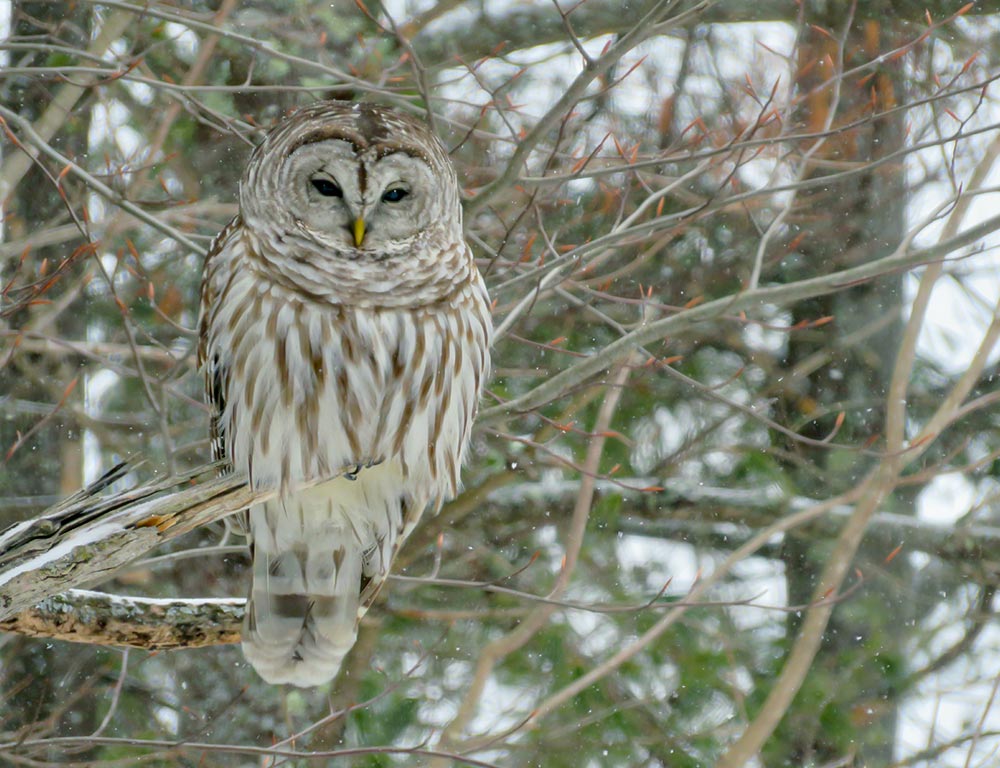
- Scientific Name: Strix varia
- Population: Stable
- Life Span: 10-15 years
- Size: 16-25 inches
- Weight: 1-2.3 pounds
- Food: Small mammals, birds, amphibians, reptiles
- Wingspan: 38-49 inches
- Status: Least Concern
The Barred Owl, native to Maryland, is a medium-sized owl known for its distinctive hooting call.
This adaptable bird is found in various habitats, from dense forests to suburban areas. With a stable population, it has successfully adapted to human-altered landscapes.
Barred Owls are skilled hunters, preying on small mammals like mice and rabbits, as well as birds, amphibians, and reptiles. Their nocturnal lifestyle and excellent low-light vision aid them in hunting.
These owls are known for their haunting hoots, often heard in the evenings. They have a diverse diet, allowing them to thrive in different environments. Their wingspan and silent flight make them effective hunters.
Despite their adaptability, they face threats such as habitat loss and collisions with vehicles. Conservation efforts focus on preserving their habitats and raising awareness to mitigate human-induced threats.
2. Great Horned Owl
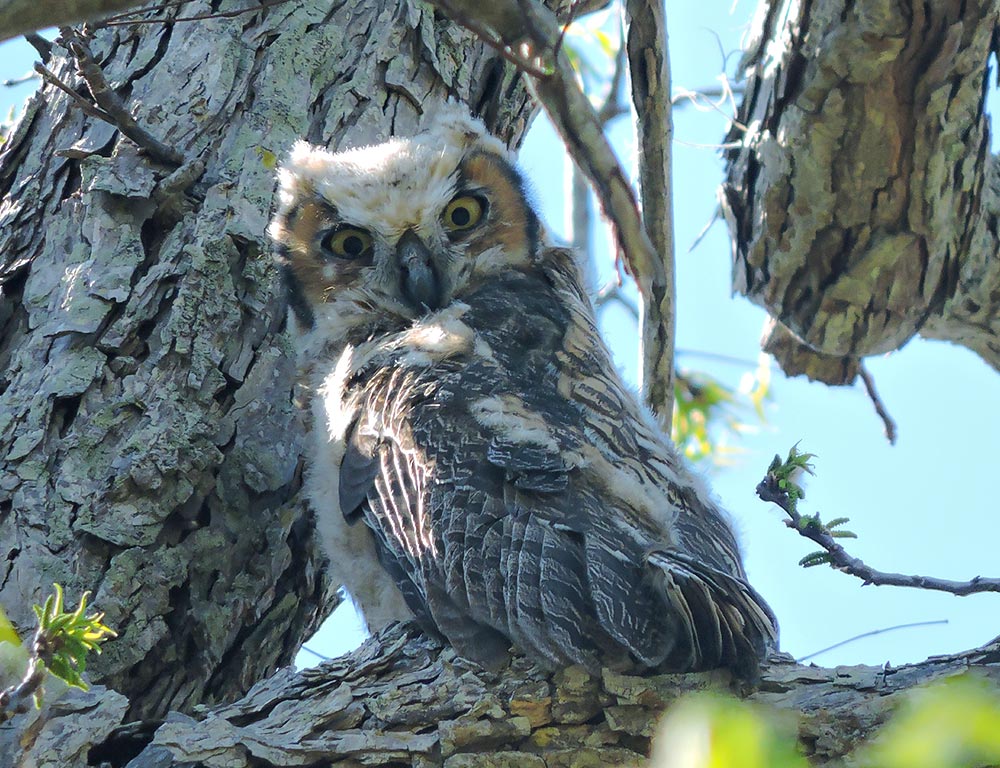
- Scientific Name: Bubo virginianus
- Population: Common
- Life Span: 10-15 years
- Size: 18-25 inches
- Weight: 2-5.5 pounds
- Food: Mammals, birds, reptiles, and large insects
- Wingspan: 40-60 inches
- Status: Least Concern
The Great Horned Owl, a powerful and adaptable predator, is a common sight in Maryland. With a varied diet, including mammals, birds, reptiles, and large insects, they play a crucial role in controlling rodent populations.
Great Horned Owls are highly territorial, establishing nests in various habitats, from forests to urban areas.
These owls are characterized by their large size, distinctive ear tufts, and intense yellow eyes. Their silent flight and exceptional night vision make them efficient nocturnal hunters. Their adaptability has enabled them to thrive across North America.
Conservation efforts focus on safeguarding their nesting sites and raising awareness about the importance of these apex predators in maintaining ecological balance.
3. Barn Owl
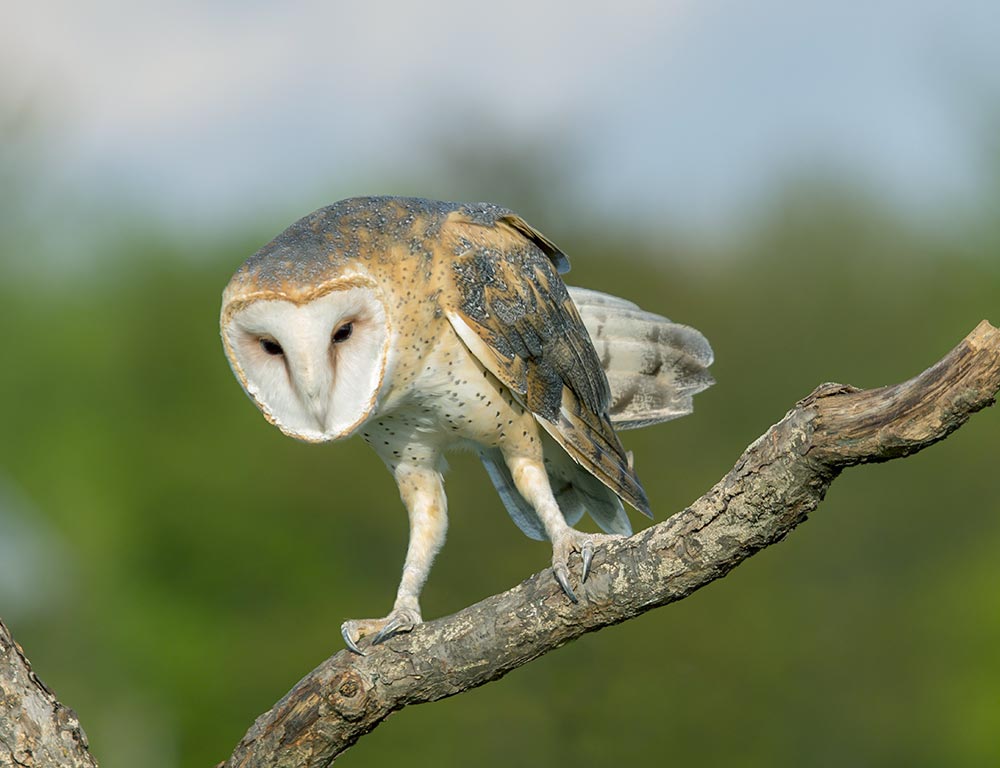
- Scientific Name: Tyto alba
- Population: Declining
- Life Span: 2-5 years
- Size: 12-16 inches
- Weight: 14-24 ounces
- Food: Small mammals, especially rodents
- Wingspan: 32-42 inches
- Status: Near Threatened
With its heart-shaped facial disc and pale plumage, the Barn Owl is facing challenges in Maryland due to a declining population.
These owls are efficient hunters of small mammals, particularly rodents. Their silent flight, aided by specialized feathers, surprises their prey.
Barn Owls often nest in barns, abandoned buildings, or tree hollows. Their declining population is attributed to habitat loss, pesticide use affecting their prey, and reduced suitable nesting sites.
Conservation efforts focus on preserving their habitats, providing artificial nesting sites, and minimizing pesticide use to ensure these charismatic birds’ survival.
4. Snowy Owl
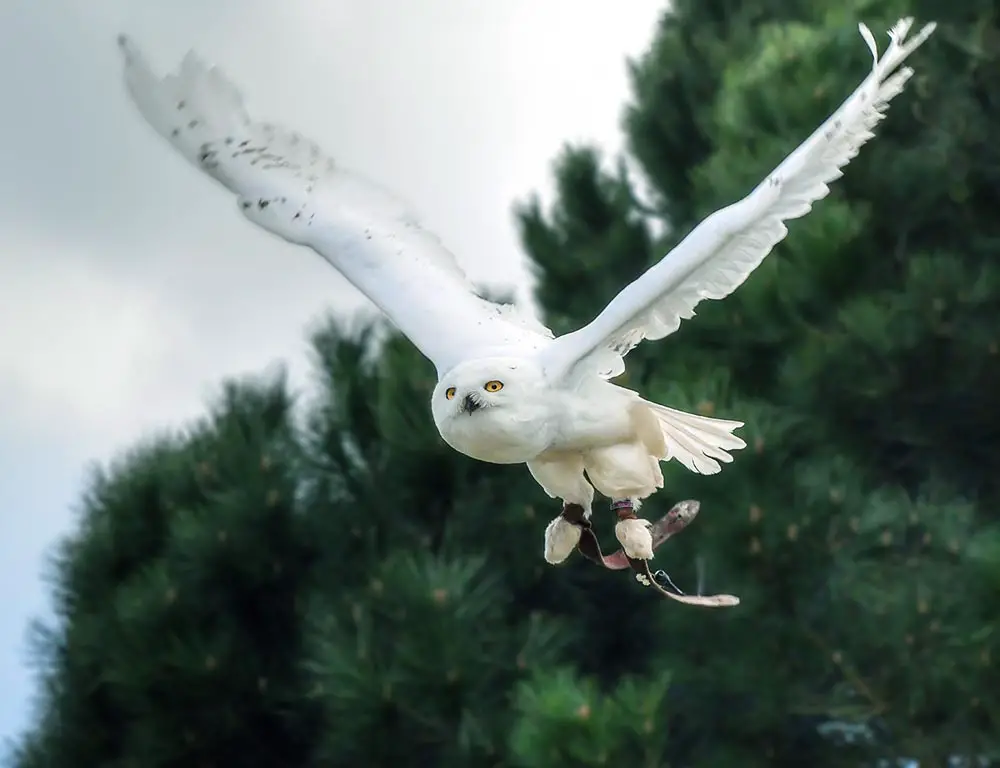
- Scientific Name: Bubo scandiacus
- Population: Varies, irruptive
- Life Span: 10-15 years
- Size: 20-28 inches
- Weight: 3-6.6 pounds
- Food: Mainly lemmings, also birds and small mammals
- Wingspan: 49-59 inches
- Status: Least Concern
The Snowy Owl is an iconic bird with its striking white plumage, making it easily recognizable.
While they primarily breed in the Arctic tundra, some individuals migrate to Maryland during irruption years, driven by fluctuations in their main prey, lemmings.
These owls are powerful hunters, capable of taking down birds and small mammals as well. Their nomadic behavior in search of prey sets them apart from other owl species. Encountering a Snowy Owl in Maryland is a rare and exciting event.
Conservation efforts primarily focus on protecting their breeding grounds in the Arctic and understanding their migration patterns to ensure their survival during irruption years.
5. Eastern Screech Owl
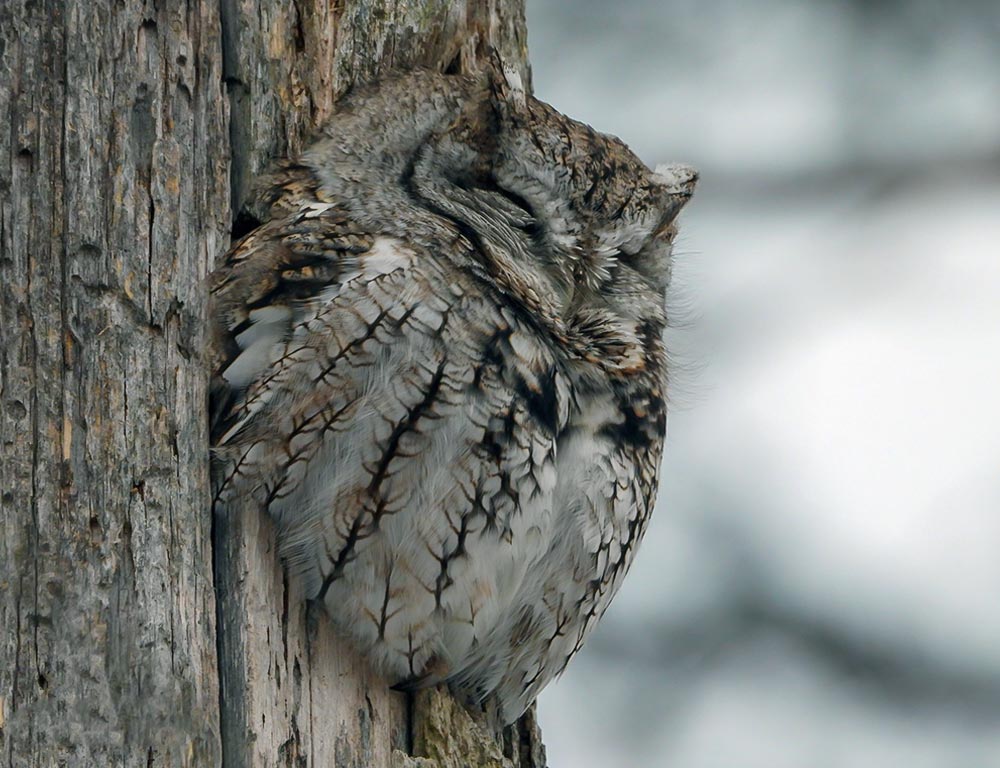
- Scientific Name: Megascops asio
- Population: Stable
- Life Span: 6-8 years (wild); up to 20 years (captivity)
- Size: 6-10 inches
- Weight: 4-8 ounces
- Food: Insects, small mammals, birds
- Wingspan: 18-24 inches
- Status: Least Concern
The Eastern Screech Owl is a small, adaptable owl commonly found in various habitats throughout Maryland, including woodlands, suburbs, and urban areas.
Despite their name, they produce a variety of calls and are known for their excellent camouflage. They have two color morphs – gray and reddish-brown – providing effective camouflage against tree bark.
These nocturnal hunters feed on insects, small mammals, and birds. Their size and agility make them proficient hunters, capturing prey with their sharp talons.
Conservation efforts focus on preserving diverse habitats to ensure a stable population of these beneficial predators.
6. Long-eared Owl
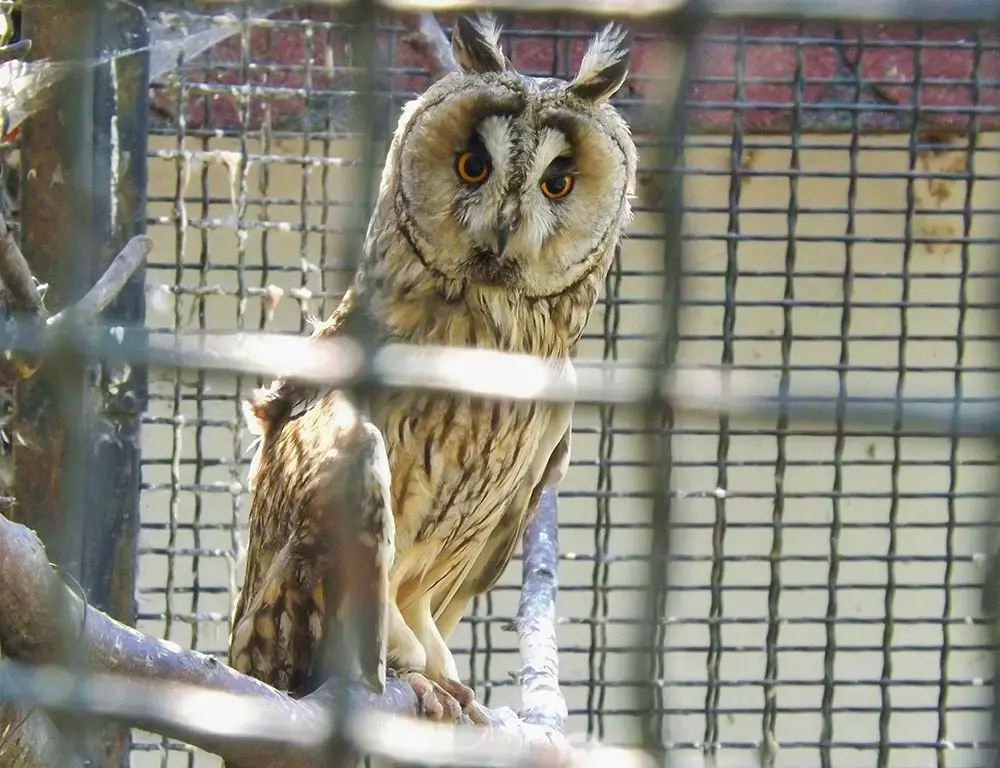
- Scientific Name: Asio otus
- Population: Declining
- Life Span: 4-10 years
- Size: 13-16 inches
- Weight: 7-16 ounces
- Food: Small mammals, birds
- Wingspan: 35-42 inches
- Status: Least Concern
The Long-eared Owl, distinguished by its long “ear” tufts, is facing population declines in Maryland. These owls prefer dense woodlands and coniferous forests.
They are primarily nocturnal hunters, preying on small mammals and birds. Their cryptic plumage and nocturnal habits make them elusive and challenging to study.
Long-eared Owls often roost communally during the non-breeding season. Conservation efforts are essential to address habitat loss and ensure the availability of suitable nesting sites for these owls.
Raising awareness about the importance of preserving their habitats is crucial for the long-term survival of this species.
7. Short-eared Owl
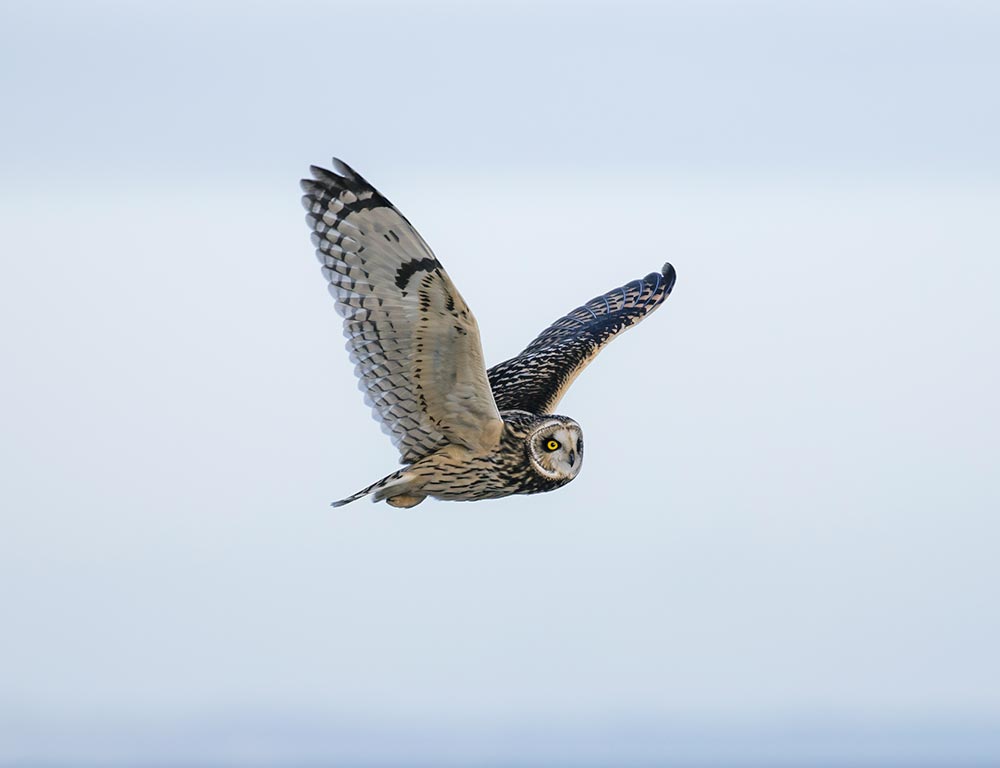
- Scientific Name: Asio flammeus
- Population: Declining
- Life Span: 4-7 years
- Size: 13-17 inches
- Weight: 7-17 ounces
- Food: Small mammals, birds
- Wingspan: 33-43 inches
- Status: Near Threatened
The Short-eared Owl, characterized by its distinctive facial disk and short “ear” tufts, is facing population declines in Maryland. These owls prefer open habitats like grasslands and marshes.
Unlike most owls, short-eared owls are diurnal and are often seen hunting during daylight hours. They primarily feed on small mammals and birds, using their keen sense of hearing to locate prey.
Their declining population is linked to habitat loss and changes in land use. Conservation efforts focus on preserving and restoring their preferred habitats and minimizing disturbances during the breeding season.
8. Northern Saw-whet Owl
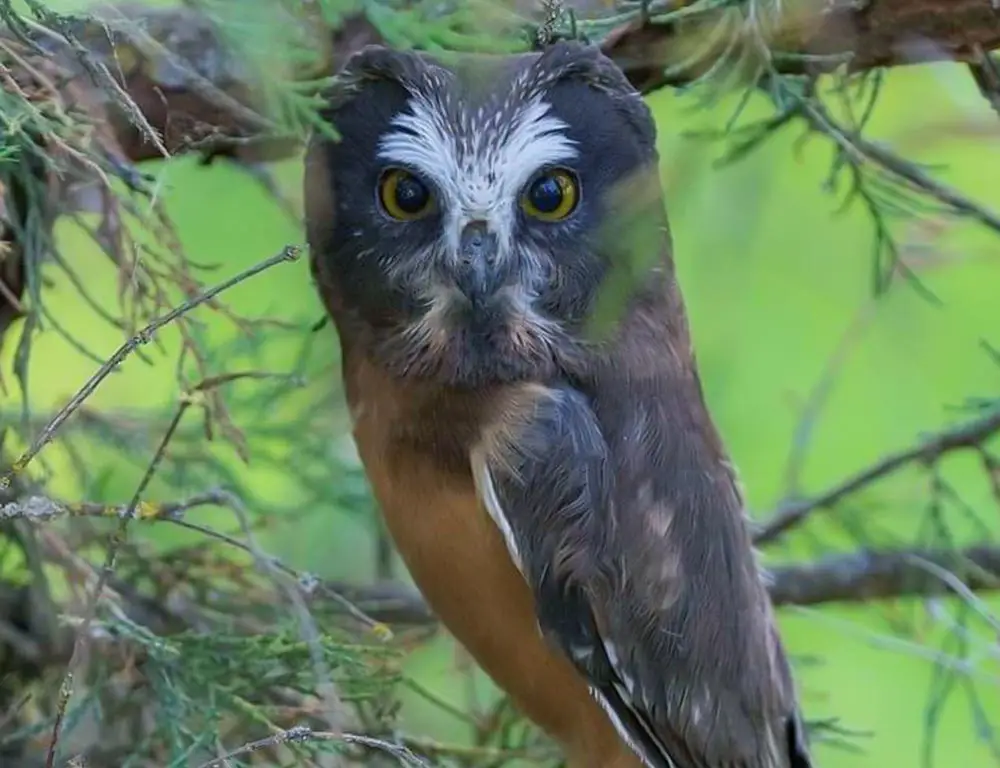
- Scientific Name: Aegolius acadicus
- Population: Stable
- Life Span: 3-7 years
- Size: 7-8 inches
- Weight: 2-5 ounces
- Food: Small mammals, insects
- Wingspan: 16-18 inches
- Status: Least Concern
The Northern Saw-whet Owl, named after the sound of its repetitive call resembling a saw being sharpened, is a small owl found in various habitats throughout Maryland.
These owls are nocturnal hunters, preying on small mammals and insects. They have excellent camouflage, making them challenging to spot in dense vegetation.
Despite their stable population, conservation efforts focus on preserving their habitats, including mixed coniferous and deciduous forests.
Research and monitoring are crucial in understanding their populations and addressing potential threats to ensure their continued stability in Maryland.
Steps to Preserve Owls in Maryland
With their mysterious nocturnal presence, owls play a vital role in maintaining ecological balance in Maryland.
Conc concerted efforts are required to ensure the survival of these fascinating birds and their essential contributions to the ecosystem. Here are several steps that can be taken to preserve owls in the Old Line State.
Habitat Preservation
The primary key to owl conservation is safeguarding their habitats. Maintaining diverse ecosystems, from woodlands to marshes, ensures ample hunting grounds and suitable nesting sites.
Conservation initiatives should prioritize preserving these environments against urbanization, deforestation, and climate change threats.
Nesting Site Protection
Many owl species face challenges due to the destruction of natural nesting sites. Establishing and maintaining protected areas where owls can nest without disturbance is critical.
This includes safeguarding trees, cliffs, and other natural structures that serve as their homes during breeding seasons.
Reducing Pesticide Use
Owls are integral in controlling rodent populations, contributing to natural pest control. However, the use of pesticides poses a significant threat to their prey.
Encouraging environmentally friendly agricultural practices and minimizing pesticide use helps maintain a healthy balance in owl diets.
Public Awareness and Education
Raising awareness about the importance of owls and their role in ecosystems is crucial.
Educating the public on the significance of these birds promotes a sense of responsibility and encourages individuals to participate actively in conservation efforts.
Monitoring and Research
Continuous monitoring of owl populations and research into their behavior and ecology provide essential data for conservation planning.
This knowledge helps identify emerging threats and develop targeted conservation strategies for different owl species.
Rehabilitation and Rescue Programs
Establishing and supporting owl rehabilitation and rescue programs is vital for caring for and recovering injured or orphaned owls.
These programs contribute to the overall well-being of owl populations and can also serve as educational tools for the public.
Legal Protections
Implementing and enforcing legal protections for owls and their habitats is essential. Regulations that control hunting, logging, and other activities impacting owl populations help ensure their continued existence in Maryland.
In the collective pursuit of these steps, Maryland can continue to be a haven for owls, fostering a harmonious coexistence between these enigmatic birds and the human communities that share their habitats.
Wrapping Up
The collective commitment to habitat protection, education, and responsible practices is paramount in preserving Maryland’s owls.
By championing these measures, we safeguard the owls’ existence and the delicate balance of our ecosystems.
As guardians of their habitats, we ensure that these majestic birds’ haunting hoots and silent flights continue to echo through Maryland’s landscapes, enriching our natural heritage for generations to come. Stay focused.